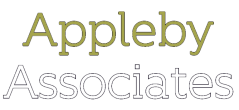Regardless of the reason why an organisation is looking to recruit, there is always a window of opportunity that occurs between the need arising and action being taken. In this window a traditional approach with a CV might be counterproductive but a capability profile can be particularly useful.
The reason why we do not advocate the use of a CV in these situations is because a CV carries the clear message ‘I want a job’. At this moment in time, whilst there might be a need, it has not been formalised, so providing a CV would be premature. Obviously you are hoping that there might be an opportunity and if, when you are talking to somebody, they ask for your CV, you will be glad to provide one.
If you wait for a role to be advertised, the window of opportunity for you to have the greatest influence has gone. To identify these windows you need to be proactive in your approach, either by using your network to make introductions to people of interest to you that you can follow up on, or by making a targeted direct approach to a named individual within an organisation. In both situations you are looking to see if you can secure some quality time, ideally face to face, with the appropriate decision maker.
The capability profile is a ‘softer’ version of the CV for use in networking and targeted direct approaches to companies to draw attention to your skills and achievements. This helps you get feedback and advice on your job search options, and helps the person you are talking to understand what you have to offer, in case any opportunities exist or arise in future.
Crucially it allows you an opportunity to position yourself at the front of any recruitment queue as you are now a known entity to them. A manager may become aware of a problem or opportunity that requires a new member of staff but postpone action because the process of seeking and selecting someone is so time-consuming and risky. Your arrival for an informal discussion may be just the trigger that is needed.
Typically a capability profile is useful when:
- A new need arises; this might be a problem that needs solving or an opportunity to capitalise on. The company may or may not realise it has this need and you may be able to point out the opportunity or problem and then demonstrate your ability to address it.
- A person arrives they can’t afford to miss, and a role is created. This is more likely to happen in an expanding or successful company, but you must be prepared to demonstrate how hiring you will benefit the bottom line.
- An existing position becomes available because someone leaves, moves for various reasons or is performing poorly. Your aim is to talk to the company before an offer is made, ideally before the role is advertised or a recruitment consultant is retained. This reduces the competition and the delay for you, and it saves the company a lot of money, time and effort.
The capability profile focuses on your transferable capabilities and achievements. It does not have the objective, the professional experience or qualifications (unless specifically relevant). It should be an uncluttered page in a clear font with plenty of white space. You will probably not have space to do justice to all of your transferable capabilities, so choose the five to six you wish to focus on or group some of them together, for example into ‘interpersonal skills’ or ‘technical expertise’.
A lot depends on the clarity and quality of your marketing material – and this is where with our help, you can learn how to repackage yourself. applebyassociates.com/marketing-stage
For practical advice and support in creating your marketing material, including your Career Search Objective contact us to see how we could help.

